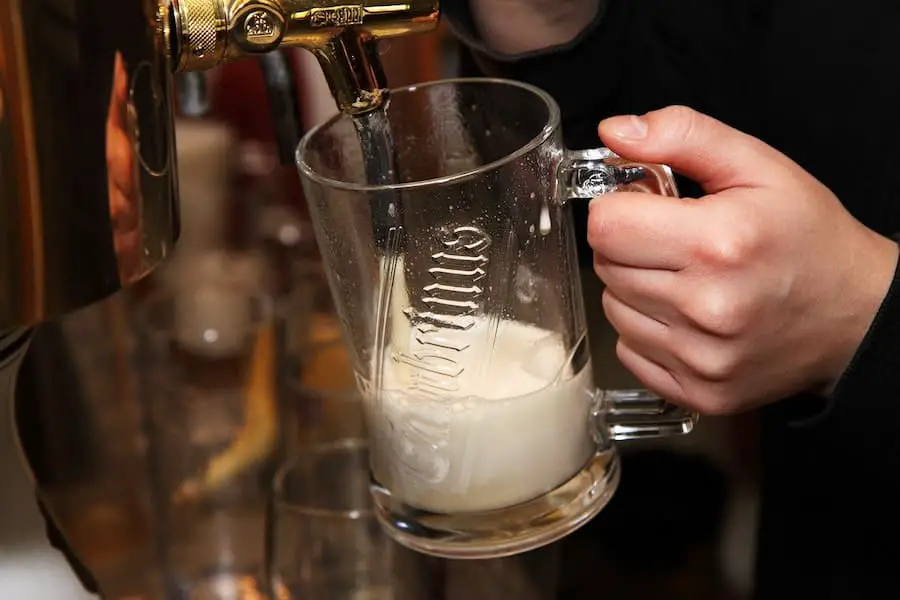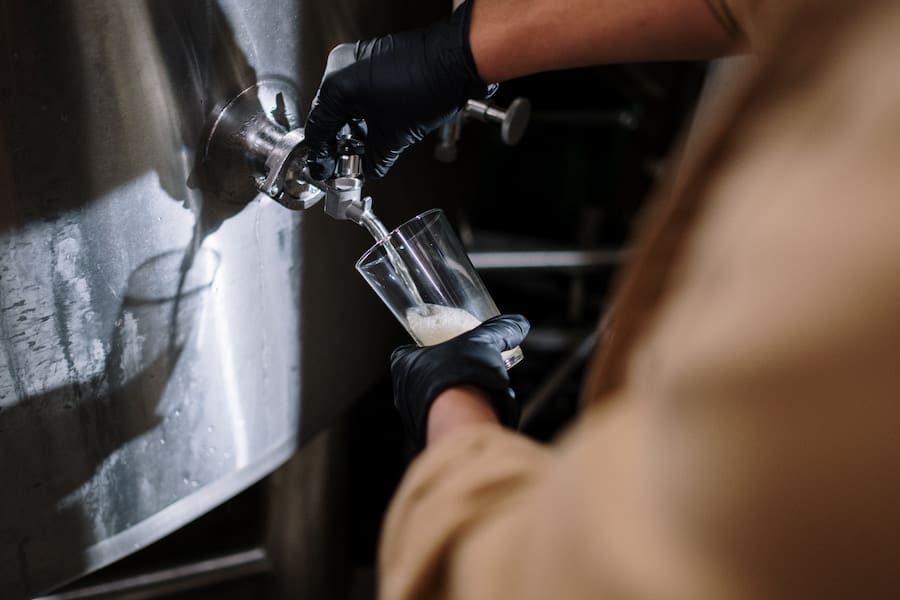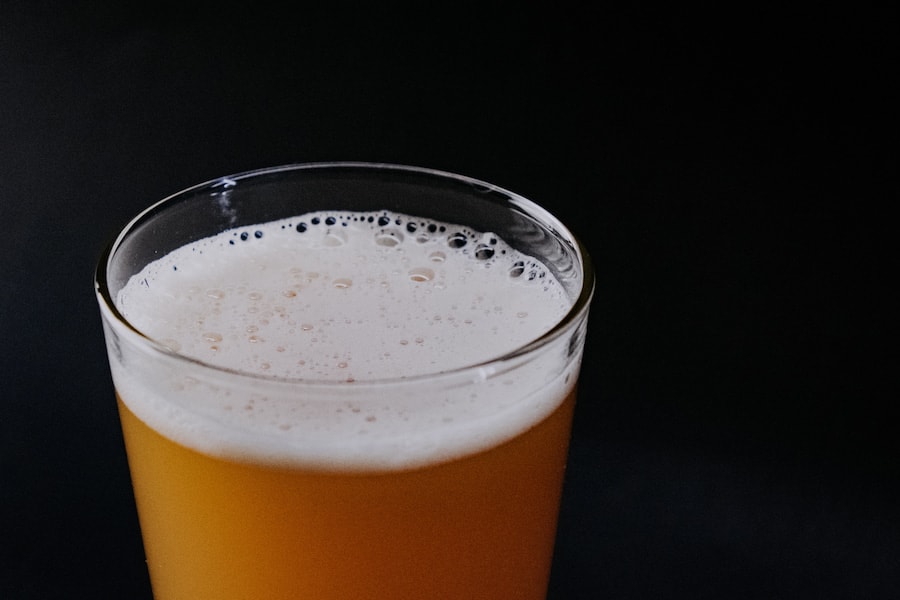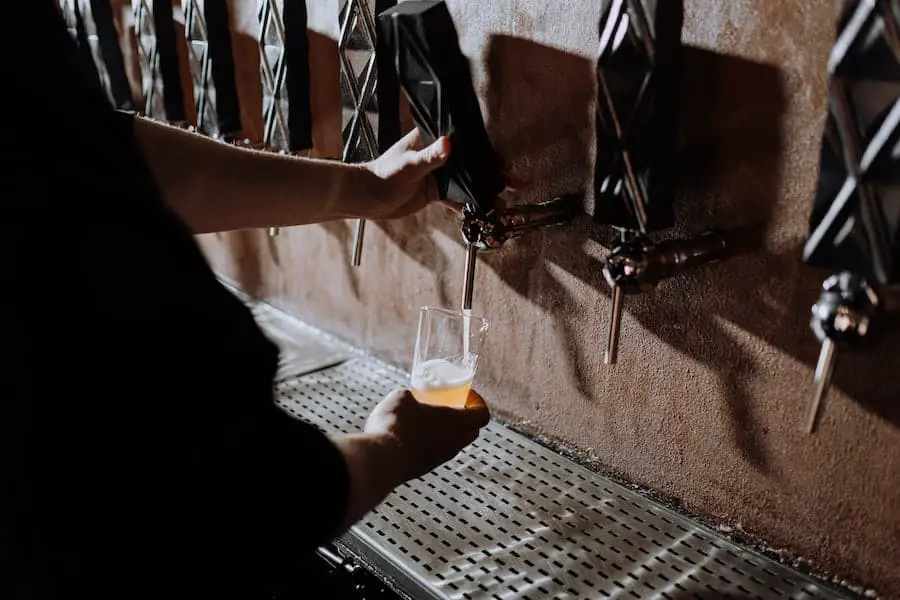If you buy something through a link in our posts, we may get a small share of the sale.
You may get confused about whether to use carbonation drops or priming sugar for the best brew results. Knowing the difference between the two will help you decide which one to use when significantly improving your brewing. Below is a comparison of carbonation drops vs priming sugar.
Contents
Carbonation Drops vs Priming Sugar Overview
Both carbonation drops and priming sugar can be used in the fermentation process. However, distinguishing the two is challenging to many people. This article outlines all you need to know concerning carbonation drops vs priming sugar.
Additionally, the table below provides a breakdown of how carbonation drops relate to priming sugar.
| Bottle size | Carbonation drops | Teaspoons |
| 3,000 ml Bottle | 7.5 drops | 2.25 Tbsp |
| 32 Ounce/1,000 ml Bottle | 2.5 drops | 2.5 tsp |
| 16 Ounce/500 ml Bottle | 1 drop | 1 tsp |
| 2,000 ml Bottle | 5 drops | 1.5 Tbls |
| 12 Ounce/300 ml Bottle | ¾ drop | ¾ tsp |
| 22 Ounce/750 ml Bottle | 2 drops | 2 tsp |
Carbonation Drops
Carbonation drops are balls of boiled hard sugar that are placed into the bottles containing beer during the bottling process. The beer bottles contain yeast residue which begins to eat up the carbonation balls and commences the secondary fermentation.

As the yeast consumes the sugar, carbon dioxide is produced which does not escape the capped beer bottles but rather gets absorbed by the beer. The carbon dioxide remains in the beer until the bottle cap is removed.
However, the in-bottle fermentation process increases the content of alcohol in the beer. Carbonation drops take about one week to fully carbonate the beer. If the drop gets completely dissolved and sediment is observed at the bottom of the bottle, it’s a clear indication that the process of carbonation has finished.
Bottles of homebrew normally have some sediment at the bottom because of the mini fermentation. The sediment comprises the yeast that died after carbonation was complete. Here are some different features of carbonation drops.
Easy to Use
Carbonation drops ensure that the same sugar amount is added to every bottle of homebrew. It relieves you of the hassle of precisely measuring out the exact amount of priming sugar, making carbonation consistent in all your brews while preventing beer bottle bombs.
When it comes to the usage procedure, you simply drop one in a sanitized bottle before adding the beer. After adding the beer, you only wait for 5 to 7 days for your beer to be fully carbonated and ready to drink.
Dissolves Easily
Carbonation drops easily get dissolved in any liquid as they are made of 27% glucose and 73% dextrose. All the sugar gets absorbed in the beer bottle, eliminating the chances of getting off-flavors in your beer.
Reliable
Priming sugar miscalculations can result in over-carbonated or under-carbonated beer. Using carbonation drops helps you overcome this as it comes packaged in its precise measurements.
You only have to put a carbonation drop or two in every bottle then pour in your beer for secondary fermentation. These drops have no expiry date, you are only required to store them properly in a cool and dry place where they cannot be invaded by pests.

Priming Sugar
Priming sugar refers to any sugar that can be added to a bottled fermented beer to carbonate it. You can use many types of sugar such as dark brown sugar or honey, dextrose, and sucrose to add extra fizzle, flavor, and aroma to your beer.
Typically, you are required to measure it and add it in hot water for it to dissolve before placing it in bottles with fermented beer. When used in the right conditions, these sugars are highly fermentable and no residue sweetness is left on the final beer.
Priming sugar has ease of use for you are only required to make a research of the amount of sugar to use and dissolve it in hot water. Failure to add sufficient sugar results in under-carbonated or flat beer. On the other hand, your bottle may overflow as you open or even explode if you add too much priming sugar.
Differences
Although both the carbonation drops and priming sugar have no expiry date and can be used by homebrewers to brew their beer, they vary in some way. Reading from the best homebrew books can also help you decide. Below are some of the differences between the carbonation drops and priming sugar.
- Flavor – Priming sugars add aroma and flavor to beer if used in the right amount. However, if used in small insufficient amounts or the wrong kind is used, it results in a flat beer. On the other hand, carbonation drops aim at adding flavors in a beer, there are no cases of over or under carbonation with carbonation drops.
- Alcohol Content – Carbonation drops increase the alcohol content because they are added directly to your beer, improving the efficiency of the in-bottle fermentation process. This is not the case with priming sugar as it has to be dissolved in hot water first, which reduces the efficiency of the in-bottle fermentation process, impacting the alcohol levels in your beer.
- Accuracy – Carbonation drops are pre-measured in the right amount to be placed in every beer bottle, making them ideal for use even by inexperienced brewers. With priming sugar, getting the right and similar carbonation levels between different beer bottles is quite challenging as you have to measure the amounts manually.
Some beer bottles may be right, others under-carbonated or over-carbonated, making it inconsistent and unsuitable to use where accuracy is needed. - Ease-of-Use – Adding the priming sugar into the beer bottle can be challenging and at times it may lead to sugar spillage down the side of the beer bottle. Sometimes it can be a tedious job which can result in the oxidation of the beer if one is not careful.
With carbonation drops, you simply need to drop one or two drops and wait for carbonation to take place. - Time Consumption – When using priming sugar, you have to boil water, sanitize bottles, fermenters, and other containers to be used, and the process can be time-consuming. In the end, you will also have a lot of equipment to clean which also consumes much time.
On the other hand, carbonation drops, there is no whole process of sanitizing or cleaning bottles and mixing buckets as you only have one piece of equipment to clean after you are through with bottling. - Beer Bottle Bomb – If you use too much priming sugar, you may end up with a beer bottle bomb. When you open one of the beer bottles that have over-carbonated, the pressure of carbon dioxide produced might blow off the bottle cap resulting in gushers. With carbonation drops, you cannot experience these problems as the right quantity you need to put in each bottle is already pre-measured.

Similarities
Considering that both the priming sugar and the carbonation drops are used in beer carbonation, they do have some things in common. Here are some of the carbonation drops and priming sugar similarities.
- Both carbonation drops and priming sugar provide effective beer carbonation, making them ideal for home brewing.
- They both dissolve easily, although priming sugar is first dissolved in hot water before it is added to the beer bottles while the carbonation drops are added directly to the beer bottle.
- They both help in improving the beer flavor and aroma. However, the resulting flavor and aroma when using priming sugar will depend on the priming sugar used.
- Both the carbonation drops and priming sugar uses dextrose, sucrose, or glucose as the main ingredient.
Major Distinguishing Factor: Ease-of-Use
The carbonation drops at the priming sugar significantly vary on usability. The carbonation drops come as a pre-measured amount of sucrose, dextrose or glucose specifically made for home brewing. They are added directly to the bottles with fermented beer without any additional calculations, measurements, or dissolving.
On the other hand, priming sugar will require you to make the calculations on the right amount to put in each beer bottle and then measure the amount manually. You will need to dissolve this priming sugar into hot water before putting it in the beer bottles. Additionally, this process will involve cleaning and sanitization of the containers to be used.
When to Use Carbonation Drops
Even after knowing the differences and similarities between carbonation drops and priming sugar, you might still be unsure of the circumstances where carbonation drops might suit you best. Here are some instances when carbonation drops might be the best option.
When Unsure of Priming Sugar Measurements
Carbonation drops do not require any measurements, and so when you are not sure of the priming sugar to use, it is the easiest way to go. Before adding your beer to a sanitized bottle, all you are required to do is to add a carbonation drop in every bottle.
Priming sugar when added in large quantities causes beer bombs, and if added in small quantities results in flat beer. When you want to eliminate the risk of having uneven amounts of sugar in every bottle, carbonation drops are the way to go.
When You Want to Save Time
Homebrewing when using priming sugar can be a tedious and time-consuming job that involves a lot of measurements, calculations, cleaning, and sanitization. You will need to clean and sanitize the mixing bucket where you will be dissolving the priming sugar.
Also, doing the calculations on the right amount of priming sugar to use and then measuring the amount for each bottle can be time-consuming especially when many bottles are involved.
In such a case, the carbonation drops might be the best option for you. They come pre-measured, and you only need to place a drop into each bottle. You will also have no mixing bucket to clean after bottling.

When You Want to Be Sure That Carbonation Process Is Complete
With carbonation drops, it is easy to observe inside the bottle and find out whether the drop has dissolved, whether the yeast has consumed all the sugar and formed a layer of sediment at the bottom.
All this takes place within about one week and you will know that carbonation has finished. When you use priming sugar, there’s nothing that indicates that carbonation has taken place, and you will only have to wait for about 2 to 4 weeks to be sure.
When to Use Priming Sugar
Although many brewing beginners might prefer using carbonation drops because of its ease-of-use, there are some situations where priming sugar might be the best option. Here are some brewing instances where priming sugar might suit you best.
When You Need Precise Measurements
When preparing different beer styles, you may be required to know the actual carbonation requirements for each style. Knowing the precise carbonation levels can be challenging with carbonation drops.
It is challenging to try to add a fraction of a carbonation drop to obtain precise results. If you try to divide the carbonation drops into precise pieces, you might end up losing all the benefits of using carbonation drops over the priming sugars.
When You Are on a Tight Budget
Although the carbonation drops and priming sugar are both effective in beer carbonation, their prices are not the same. The carbonation drops are specifically designed for homebrewing and are a little bit more expensive than the priming sugar.
On the other hand, you have a wide variety of priming sugars that you can use, including maple syrup, molasses, honey, brown sugar, or white cane sugar. This gives you the flexibility to use a priming sugar that is readily and cheaply available to you. However, for the best results, it is advisable to use a dry malt extract or corn sugar (dextrose).
When You Want a Minimal Alcohol Level
Due to the in-bottle fermentation process, the alcohol content level is high when using carbonation drops.
Although the priming sugar will also convert into alcohol, you will have diluted the beer by adding the hot water in which you dissolved the priming sugar. This dilution significantly lowers the alcohol content in the beer.
Homebrew Carbonation Quick Tips
Although both the carbonation drops and the priming sugar are effective in beer carbonation, there are some quick tips that you can follow to improve their efficiency. Here are some of the homebrew carbonation quick tips:
Keep Watch of the Temperature
Considering that carbonation happens because the yeast has come back to life after you have added carbonation drops or priming sugar, it means the yeast in the beer needs optimum fermentation temperature.
Under the right room temperature, the yeast eats the carbonation drops or the priming sugar to produce carbon dioxide which helps to carbonate the brew. If the temperature in the room is too low, the yeast might go to sleep and carbonation won’t take place.
On the other hand, if the room is too hot, there are higher chances of getting off-flavors. It is therefore advisable to carbonate your beer under the same temperature that you fermented it in. Typically, the optimum room temperature to carbonate the beer is around 65 to 70 degrees Fahrenheit.
Consider the Type of the Brewing Sugar You Are Using
Considering the type of brewing sugar you are using is important especially when using a priming sugar as it is not pre-measured. For instance, corn sugar has higher chances of over-carbonation and you might end up with gushers or exploding bottles.
It is therefore advisable to put only a three-quarter cup of corn sugar per 5-gallon batch to avoid gushers. If you’re putting the priming sugar directly into the beer bottles, it is advisable to only use one teaspoon of dextrose in each 1 L bottle.

Ensure the Carbonation Is Complete Before Opening the Beer Bottles
One thing you don’t want to do is to open your beer bottles before carbonation is complete. Try holding up one of the beer bottles to the light and check for the air gap that will expand from the bottle top down to the top of the beer.
Without necessarily shaking the bottle, turn it upside down and back upright. Observe the bubbles forming and floating on top of the beer. Although you cannot scientifically measure whether carbonation is complete, these tips will help you predict when it is complete.
Frequently Asked Questions
Do Carbonation Drops Require Sterilization?
Unlike carbonation drops, priming sugar requires to be added in hot boiling water for it to dissolve.
With carbonation drops, there is no need to sterilize the drops, you only need to ensure that your hands are clean to remove the drop from its freshly opened packet and immerse it in the beer bottle directly.
How Long Does Home Brew Beer Take To Carbonate?
When using carbonation drops, it takes 7 days for the drop to fully dissolve and form a layer of sediment at the bottom, showing that carbonation has taken place. However, waiting for a further 7 days ensures a great-tasting beer.
On the other hand, when using priming sugar, your beer takes 2 to 3 weeks to fully carbonate. The more the beer ages and conditions, the more it ends up with a sweeter taste.
How Does Priming Sugar Affect the Taste of Your Beer?
During the bottling process, you can use priming sugar in the right quantities to add flavor and aroma to your beer.
Priming sugar also makes your beer generate bubbles of gas and produce a hissing sound when opening the bottles, eliminating the psychological notion of a flat beer. Keep in mind that using it in small quantities can lead to under-carbonation of the beer, resulting in a flat taste.
Carbonation Drops vs Priming Sugar: Verdict
Although both carbonation drops and priming sugar are effective in carbonating a beer, they differ in ease of use and impact on the beer alcohol content. That makes carbonation drops the best option for beginner brewers or homebrewers who don’t want the tedious and time-consuming tasks involved when using priming sugar.
On the other hand, priming sugar might be the best option for home brewers who want precision in measurements or brewers who are on a tight budget. With the above guide on carbonation drops vs priming sugar, you will be able to choose which one suits your brewing needs best.

